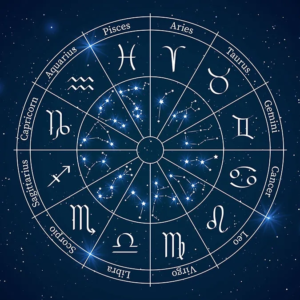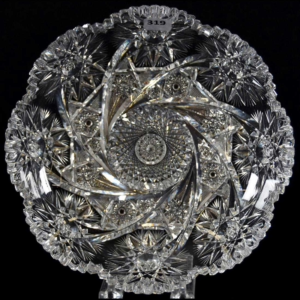staurolite – properties, virtues & benefits
Staurolite stone is a rare and mystical gemstone that takes its name from the Greek words “stauros” and “lithos”, meaning “cross” and “stone” respectively. This stone often features a natural X-shaped cross, giving it sPiritual and healing properties. Discover its virtues and uses in our guide dedicated to Staurolite stone.
STAUROLITE CHARACTERISTICS
- Chakra: Root.
- Properties: Protection, healing, sPiritual connection, mental clarity.
- Astrology: Venus.
- Zodiac: Capricorn.
- Elements: Earth.
- Colors: Brown-red, brown-yellow.
- Hardness: 7 to 7.5 on the Mohs scale.
- Chemical Formula: Fe2+2Al9O6(SiO4)4(O,OH)2.
- Associated god: /
STAUROLITE – HIS HISTORY
In 1792, French mineralogist Jean-Claude Delamétherie gave the name “Staurolite” to a stone he first described. The name comes from the Greek “stauros”, meaning “stake for torture”, and derives from the Indo-European root “sta”, meaning “to stand”. Although René Just Haüy, another mineralogist, attempted to rename it “Staurotide”, the original name has remained in use, although both names can also be found, as well as “staurolithe” and “croisettes de Bretagne” to designate this stone. Its perfect geometric structure, sometimes cross-shaped, has always fascinated mankind, making this stone one of the most surprising elements in the mineral kingdom. The two largest deposits of this stone, which can be found near Coray and Baud, are worldwide.
.
The Dark Mountains are home to some strange rocks, but it wouldn’t be wise to disrupt local cultures to find them. The Armorican Massif, formed millions of years ago, has created many geological wonders, including Staurolites. Although these stones are mainly found around Coray and Baud, a few specimens can also be found in the Scaër area. Their shape and size vary, from macles leaning at 60° to Saint André crucifixes with angles between 60 and 120°. Occasionally, they appear as three-part macles tilted at 60°, but this is rare. Staurolites are grouPings of several crystals of the same type, symmetrically linked together. French geologist Emmanuel Fritsch describes them as astonishing minerals, as they rarely have the smooth, perfect faces sought by crystallographers. Their morphology is difficult to describe, and they are monoclinic desPite an earlier belief that they were orthorhombic. The color of Staurolites varies from deposit to deposit, with mainly dark brown tones at Coray and reddish-brown at Baud. Differences can be spotted by comparing stones or using a simple photo.
The remarkable characteristics of Stauroliths have led scientists to classify them as metamorphic rocks. Metamorphism mainly took place in clay zones during the Orvodician, rearranging the clay and creating Staurolith-laden spaces. Staurolite crystallization requires very high temperatures of between 500° and 700°. This alkaline stone is mainly composed of aluminum and iron, and comes from uncommon micaschists. Brittany’s deposits are considered some of the finest in the world, especially Coray, where the crystals are the most accomplished and well-defined, and are generally found in association with Rosporden granite. Scientists are fascinated by the surprising shapes of Staurolithes, with perfect angles that testify to nature’s remarkable handiwork. Staurolith deposits are also found in ancient mountain massifs, such as those in Russia, Madagascar or North America.
STAUROLITE STONE – ITS ORIGIN AND COMPOSITION
Staurolite is composed mainly of iron, magnesium, zinc, cobalt, aluminum and silicon, with traces of chromium, titanium and manganese. It is classified as a neosilicate and is a resistant rock with a hardness of 7 to 7.5. When Jean-Claude Delamétherie first described it in 1792 and gave it the name Staurolite, he noted the stone’s resemblance to a crucifix, whatever its length, hence the name derived from the Greek word “stauros”. This feature is easily observable, especially in photographs, and has linked the stone to the story of Christ.
Staurolite comes from aluminous metamorphic rocks, but the Bretons have an alternative, more magical version of its origin. It’s considered the “fairy cross”, associated with soil fertility in fairy culture. According to this belief, the stone is composed of crystallized fairy tears shed following the death of Christ. Throughout the world, these stones are also considered good luck charms.

STAUROLITE STONE – VERTIES AND PROPERTIES
PSYCHOLOGICAL STAUROLITE
In lithotherapy, Staurolite is considered the stone of emotional balance. It helps to temper emotions and provides a sense of well-being and satiety due to its link with fertile soil. It is particularly recommended for overcoming addictions and bringing about positive changes in our lives. Experienced people can use it to help wandering sPirits, grieving souls or for purification, acting as a very powerful protective shield. Staurolite is useful for people working in the paranormal and energy theraPists in general, to prevent entities released during healing from sticking to their aura. However, it is important to take precautions during such paranormal activities, as released entities may find new hosts through the protected person, by sticking to their loved ones, for example. It is therefore essential to extend protection to all.
The fairy cross is said to link its wearer to nature sPirits, such as gnomes, undines and salamanders. Walking in nature, it’s possible to contact these invisible beings off the beaten track, which can be made easier for people with a naturally sensitive nature or for mediums and clairvoyants. To facilitate communication, it is advisable to follow precise rituals and behave in a manner respectful of nature. Staurolite, a lucky stone, is reputed to have protected explorers, adventurers and sailors. To unload the stone, we recommend placing it directly on the ground outside, in a garden for example, rather than immersing it in salt or fresh water, as it needs soil rather than water. It’s important to take good care of this precious stone.
PHYSICAL STAUROLITE
Staurolite is associated with the root chakra, making it a rooting or anchoring stone, and is considered to have positive effects on physical and mental balance. It is also linked to the heart chakra, and can help with orientation and decision-making by focusing on the goals to be achieved. Depending on the chakra concerned, the stone can help rebalance energy. Thanks to its powerful energy, Staurolite is recommended for combating dependencies and addictions, and for conserving energy to avoid exhaustion. It is also an excellent anti-stress agent and can help correct emotional disorders. All in all, Staurolite is a beneficial stone for taking care of ourselves, both physically and mentally.

STAUROLITE STONE – CLEAN AND RECHARGE
Staurolite stone is a natural stone that can absorb surrounding energies over time, so it’s important to clean and recharge it regularly to maintain its properties and vibrations. Here’s how to do it:
Cleaning:
- Use distilled water to clean the staurolite stone.
- You can also use unrefined sea salt or incense to clean and purify the stone.
- Avoid cleaning with tap water, as this may contain impurities that can damage the stone.
Loading:
- Expose the staurolite stone to direct sunlight for a few hours to recharge.
- You can also recharge it by placing it on a cluster of quartz or rock crystal.
- Meditation and intention are also effective ways to recharge your staurolite stone.
It is recommended to clean and recharge the staurolite stone once a month or more often if you use it frequently.
WHERE DOES THE NAME STAUROLITE COME FROM?
The name “staurolite” comes from the Greek words “stauros” meaning “cross” and “lithos” meaning “stone”. This stone is so named because of its natural crystalline form, which often features an X-shaped cross. The cross is formed when two staurolite crystals meet at right angles, making it a particularly remarkable and mystical stone. Staurolite is also known as the “stone of the cross” because of this distinctive feature of its crystalline form.
WHICH CHAKRA DOES STAUROLITE ACT ON?
Staurolite is associated mainly with the root chakra (1st chakra), which is located at the base of the sPine. The root chakra is the energy center linked to security, stability, survival, grounding and connection to the earth. Staurolite can help balance and strengthen the root chakra, promoting stability, centeredness and self-confidence. It can also help release energy blockages in this chakra to allow energy to flow freely through the body. This can promote a sense of security and well-being, as well as a better ability to cope with the challenges of everyday life.
WHICH ASTROLOGICAL SIGN IS ASSOCIATED WITH STAUROLITE?
Staurolite is associated with the zodiac sign of Capricorn. Capricorn is the tenth sign of the zodiac, represented by the mountain goat, and is associated with people born between December 22 and January 19. Capricorns are often seen as responsible, ambitious and determined people, seeking to achieve concrete goals in their lives. Staurolite can be a beneficial stone for Capricorns, helPing them to strengthen their connection with the earth, find their grounding and inner stability, and cultivate perseverance and resilience in pursuit of their goals.
STAUROLITE STONE SUMMARY
Staurolite stone, also known as fairy cross, is a semi-precious stone that forms in metamorphic schists. It is found in various parts of the world, including France, Spain, Switzerland, Russia and the USA.
Staurolite is generally dark brown to black, but can also be red, brown or green. It has a hardness of 7 to 7.5 on the Mohs scale and a specific gravity of 3.7 to 3.8.
This stone is often used in jewelry and decoration, but is also known for its sPiritual and energetic properties. It is considered a stone of protection and transformation, helPing to overcome obstacles and enhance connection with nature and divine forces. It is also associated with emotional and physical healing, as well as enhancing creativity and intuition.

